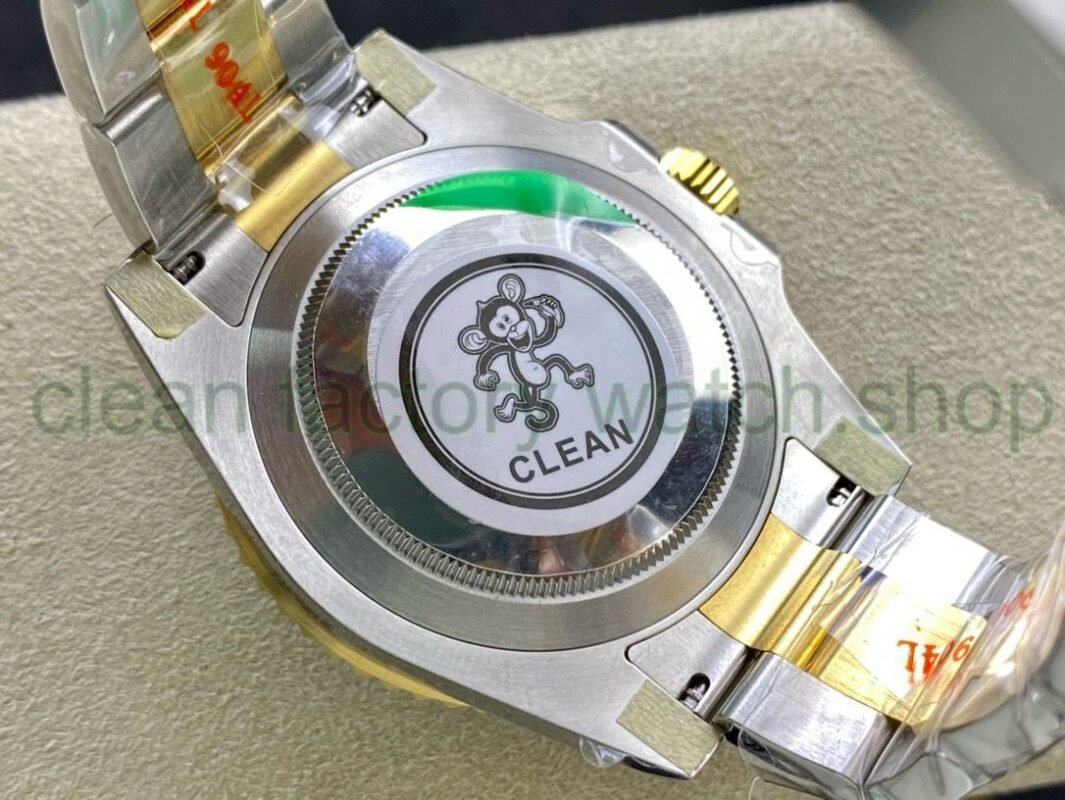Blog
Unveiling Clean Factory Watch: Revolutionizing Manufacturing

In a world increasingly driven by sustainability and efficiency, the manufacturing sector is undergoing a transformative shift. At the forefront of this revolution is Clean Factory Watch, a pioneering initiative designed to enhance openness and obligation within industrial processes. This groundbreaking approach not onyl promises to optimize production lines but also advocates for an eco-conscious mindset that prioritizes environmental care. As industries grapple with the challenges of modern production, Clean Factory Watch emerges as a beacon of innovation, offering a fresh perspective on how manufacturers can harness technology to create cleaner, smarter facilities. Join us as we delve into how this initiative is reshaping the landscape of manufacturing, fostering a new era of accountability and stewardship in production practices.
Table of contents
- Exploring the Concept of Clean Factory Watch in Modern Manufacturing
- Integrating Sustainable Practices for Increased Efficiency
- Technological Innovations driving the Clean Factory Revolution
- Implementing Strategies for Continuous Improvement and Compliance
- Q&A
- Insights and Conclusions
Exploring the Concept of Clean Factory Watch in modern Manufacturing
In the dynamic landscape of modern manufacturing, the emergence of the Clean Factory watch concept stands as a testament to the industry’s commitment to sustainability and efficiency. This innovative approach integrates real-time monitoring, data analytics, and environmental consciousness, creating a complete framework that not only streamlines production processes but also enhances overall productivity. At its core, the Clean Factory Watch aims to minimize waste, reduce energy consumption, and ensure a pristine working habitat, ultimately contributing to both the planet’s health and the bottom line of manufacturers.
Key elements of this transformative concept include:
- Real-Time Environmental Monitoring: Sensors and IoT devices track air quality, waste levels, and resource usage.
- data-Driven Decision Making: Analytics platforms provide insights that drive continuous improvement.
- Employee Engagement: Workers are encouraged to participate in maintaining a clean and efficient workspace.
furthermore, to visualize the impact of implementing a Clean Factory Watch system, consider the following table showcasing potential improvements:
| Aspect | Before Clean Factory Watch | After Clean Factory Watch |
|---|---|---|
| Energy Consumption | 120 kWh per unit | 80 kWh per unit |
| Waste Generation | 200 kg per month | 50 kg per month |
| Employee Satisfaction | 60% | 85% |
Integrating sustainable Practices for Increased Efficiency
In today’s competitive manufacturing landscape, the integration of eco-amiable practices not only serves the planet but also bolsters operational efficiency. Factories that adopt sustainable measures often experience a reduction in waste, leading to lower operational costs. As an example, transitioning to energy-efficient machinery or utilizing renewable energy sources minimizes both the carbon footprint and energy expenses. Companies can enhance their resource management by implementing closed-loop systems that recycle water and materials, significantly improving their sustainability profile while maintaining productivity.
Additionally, the introduction of smart technology in manufacturing processes allows companies to optimize their supply chains and minimize environmental impacts.By leveraging real-time data analytics, manufacturers can make informed decisions on inventory and material use, dramatically decreasing excess waste. The utilization of such data can result in the following key benefits:
| benefit | Description |
|---|---|
| Reduced Operational Costs | Lower energy and material use translates to significant savings. |
| Improved Brand Image | Commitment to sustainability boosts corporate reputation. |
| Regulatory compliance | Aligning with environmental regulations minimizes legal risks. |
Technological Innovations driving the Clean Factory Revolution
The landscape of manufacturing is undergoing a profound conversion,fueled by groundbreaking technologies that prioritize sustainability and efficiency. As industries strive to reduce their carbon footprint, innovations such as Internet of Things (IoT) sensors, artificial intelligence (AI), and advanced robotics have emerged as pivotal players in the clean factory revolution.These tech advancements not only enhance productivity but also facilitate real-time monitoring of energy consumption and waste management, enabling factories to maintain their environmental commitments while meeting market demands. Key benefits include:
- Enhanced Energy Efficiency: Smart IoT devices optimize energy use by continuously measuring and adjusting output.
- Waste Reduction: AI algorithms predict and minimize waste during production processes, leading to lower operational costs.
- Improved Worker Safety: Robotics and automation reduce the need for human intervention in hazardous environments.
Moreover, the adoption of blockchain technology is set to reshape supply chain transparency and traceability, ensuring that every step of the manufacturing process aligns with sustainability goals. By integrating blockchain, companies can monitor raw materials’ origin, verify ethical sourcing, and maintain a clear record of their environmental impact. This technology comes with several compelling advantages,including:
| Advantage | Description |
|---|---|
| Accountability | Clear tracking of resources and processes enhances corporate responsibility and consumer trust. |
| Cost Reduction | minimized chances of fraud and error lead to significant savings in operational costs. |
Implementing Strategies for Continuous Improvement and Compliance
In today’s fast-paced manufacturing world, the drive for operation excellence and adherence to compliance standards is more crucial than ever. Implementing innovative strategies that foster continuous improvement can create a culture of accountability and efficiency. by leveraging advanced technologies and data analytics, manufacturers can pinpoint areas for enhancement. A key part of this strategy includes:
- Regular Audits: Conducting frequent inspections to identify gaps in processes.
- Employee Training: Empowering workforce with ongoing education on best practices and compliance standards.
- Feedback Loops: establishing channels for real-time input from staff on process efficiencies and compliance issues.
Another essential strategy is to integrate compliance into the very fabric of operations. By utilizing a compliance dashboard, companies can maintain a clear overview of regulatory requirements and internal policies. This dashboard acts not only as a performance metric but also as an engagement tool for all stakeholders. As an example, monitoring real-time data concerning compliance can be simplified using:
| Metric | Target | Status |
|---|---|---|
| Production Efficiency | 95% | 92% |
| Regulatory Compliance | 100% | 98% |
| Employee Training | 100% Completion | 85% Completed |
These methods not only ensure operational steps are followed but also contribute to creating a more transparent and accountable manufacturing environment. By embedding these practices into daily workflows, companies can enhance their ability to respond to both challenges and opportunities, ensuring a robust framework for success.
Q&A
Q&A: Unveiling Clean Factory Watch – Revolutionizing Manufacturing
Q1: what is Clean Factory Watch, and how does it function?
A1: Clean Factory Watch is an innovative monitoring system designed to improve the sustainability and efficiency of manufacturing processes. By utilizing advanced sensors and data analytics, it tracks parameters such as energy consumption, waste production, and resource utilization in real-time. The insights gathered allow manufacturers to identify areas for improvement,optimize operations,and reduce their environmental impact,all while maintaining productivity.
Q2: why was Clean Factory Watch developed?
A2: The development of Clean Factory Watch stems from a growing awareness of the environmental footprint of manufacturing. With increasing pressure from consumers, governments, and regulatory bodies for responsible production practices, this tool was created to empower manufacturers to adopt cleaner operations. In essence, it seeks to bridge the gap between industrial growth and environmental stewardship.
Q3: Who can benefit from implementing Clean Factory watch?
A3: Clean Factory Watch is applicable to a wide range of stakeholders in the manufacturing sector, including large-scale factories, small to mid-sized enterprises, supply chain managers, and sustainability consultants. Its adaptable framework allows organizations of any size to harness its capabilities, making it a valuable asset for anyone looking to enhance operational efficiency and reduce ecological impact.
Q4: Can you explain the technology behind Clean Factory Watch?
A4: at its core, Clean Factory Watch employs a network of IoT sensors and cloud-based analytics. These sensors collect comprehensive data from machinery, workspaces, and environmental conditions. by employing machine learning algorithms, the system interprets the data, identifying patterns and offering predictive analytics. This allows for proactive decision-making, further enhancing operational performance while promoting sustainability initiatives.
Q5: What are the expected outcomes for factories that adopt this system?
A5: Factories that adopt Clean Factory Watch are likely to see several positive outcomes, including a reduction in energy costs, minimized waste generation, and improved operational efficiency. By optimizing resource usage and identifying inefficiencies, companies can enhance their bottom line while contributing to a more sustainable future. Additionally, the transparency provided by the system may enhance brand reputation and customer loyalty.
Q6: How does Clean Factory Watch align with global sustainability goals?
A6: Clean Factory Watch aligns closely with the United Nations Sustainable development Goals (SDGs), especially those focused on responsible consumption and production, industry innovation, and climate action.By offering tools to monitor and reduce the carbon footprint of manufacturing, this system supports the global transition towards more sustainable industrial practices, fostering a greener economy.
Q7: What challenges might manufacturers face when implementing Clean Factory Watch?
A7: While Clean Factory Watch offers numerous advantages,manufacturers may encounter challenges such as initial implementation costs,the need for staff training,and integrating the system with existing technologies. Change management can also be a hurdle, as companies need to foster a culture of collaboration between departments to fully leverage the system’s capabilities. However, the long-term benefits often outweigh these initial obstacles.
Q8: What is the future of Clean Factory Watch in the manufacturing industry?
A8: The future of Clean Factory Watch looks promising as industries increasingly prioritize sustainability. As technology continues to evolve, we can anticipate enhancements in data visualization, predictive capabilities, and user engagement. Additionally, collaboration with othre technologies such as AI and blockchain may further amplify its effectiveness. The ultimate goal is to create a fully integrated ecosystem that supports sustainable manufacturing practices on a global scale.
Conclusion: Clean Factory Watch is set to reshape the landscape of manufacturing by fostering sustainability and operational efficiency. As the industry collectively moves toward greener practices, the insights and innovations brought forth by this system provide a beacon of hope for the future of manufacturing.
Insights and Conclusions
As we step into an era defined by innovation and sustainability, the advent of Clean Factory Watch marks a pivotal moment in the evolution of manufacturing. By seamlessly blending advanced technology with eco-conscious practices, this groundbreaking initiative not only enhances operational efficiency but also propels the industry towards a greener future. As manufacturers embrace these transformative solutions, the vision of a cleaner, smarter production landscape comes into sharper focus—one where profit and planet coexist harmoniously. The journey has just begun, and the potential for change is limitless. As we continue to explore the intersection of technology and environmental responsibility, Clean Factory Watch stands as a beacon of progress, inviting us all to participate in shaping a sustainable tomorrow.












